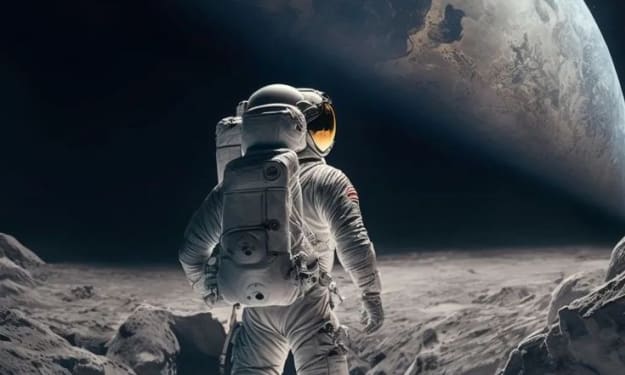Pompeii: A City Frozen in Time
The Tale of an Ancient Catastrophe

Pompeii, nestled at the foot of the majestic Mount Vesuvius, was once a bustling, vibrant city during the apex of the Roman Empire. From its bustling forum to its ornate villas, Pompeii was a symbol of Roman civilization, a flourishing hive of commerce, politics, and art. Today, the ancient city is a haunting and poignant testament to nature's merciless power, a city forever frozen in its final, catastrophic moments.
The morning of August 24, 79 AD dawned like any other day in Pompeii. The sun washed over the city, casting an early golden glow on the cobblestone streets and gleaming white villas. Citizens went about their business, oblivious to the calamity about to befall them. The city's heart pulsed with commerce as traders and merchants, their stalls overflowing with exotic wares, haggled loudly in the forum. Children's laughter echoed through the streets as they chased each other around towering columns and through grand archways. Women gossiped by the public fountains, their pitchers brimming with fresh, cool water.
In the shadow of the city, the mighty Vesuvius, a sentinel thought benign, had begun to rumble ominously. Subterranean pressures, built up over centuries, were stirring, heralding the terrifying power about to be unleashed. At noon, the volcano roared to life, its first, fearsome eruption sending a dark plume of ash and smoke towering into the sky, casting an eerie shadow over the city. Yet, Pompeiians, accustomed to minor tremors, largely ignored the spectacle, choosing to carry on with their daily lives.
As the afternoon wore on, the volcanic activity escalated. Pumice and hot ash rained down on Pompeii, blanketing the city in a grim, gray shroud. Panic gripped the city as its inhabitants began to realize the scale of the looming disaster. Men, women, and children, clutching their possessions, ran through the city, desperately seeking refuge. The air became heavy, a noxious mix of gas and volcanic debris choking the once-clear, Mediterranean air.
As darkness fell, a massive pyroclastic surge rolled down Vesuvius's slopes, a nightmarish tide of searing heat and gas. The city, once alive with the hum of civilization, was silenced instantly. The surge engulfed Pompeii, its destructive force obliterating everything in its path. Buildings collapsed under the onslaught, their grand arches and intricate mosaics reduced to rubble. The vibrant forum, once the city's beating heart, was wiped off the face of the earth. The surge preserved a poignant snapshot of the city's final moments. People, frozen in time, displayed their last actions - some huddled together in a final embrace, others in futile flight, and some even sleeping, oblivious to their impending doom.
Days later, when the destructive power of Vesuvius finally abated, Pompeii lay buried under meters of ash and pumice. An eerie silence fell over where the vibrant city had once stood. Pompeii was wiped from the face of the earth, its name and glory forgotten for centuries.
It wasn't until 1748, almost seventeen centuries later, that the ancient city was rediscovered. Early excavations brought to light the grim tableau of Pompeii's final moments. The city emerged from its ash-entombed slumber, a haunting mirror reflecting its last day. Streets, homes, temples - all were amazingly preserved under the volcanic debris. Even more striking were the petrified remains of the victims, their bodies replaced by ash, their final moments of terror captured for eternity.
Today, Pompeii is more than just an archaeological site. It's a living, albeit silent, testament to an ancient civilization and a stark reminder of nature's terrifying power. Each stone, each building, each petrified form tells a story of life and sudden death, of a city that was, and then abruptly wasn't. Walking through the city's streets is akin to stepping back in time, the eerie stillness broken only by the whispers of history.
As one traverses the paved roads, the wheel-ruts of Roman chariots still visible, a picture of a once-thriving city comes to life. The grand amphitheater, where Pompeiians reveled in gladiatorial contests, stands empty and silent, its stone seating imbued with the echoes of excited crowds and bloody spectacle. The skeletons of once opulent houses and villas, adorned with frescoes, their colors dulled but remarkably intact, speak of a society obsessed with art, beauty, and ostentation. The city's grand baths, the heart of Pompeiian social life, remain as a testament to the remarkable engineering skills of the Romans. The intricate network of lead pipes, the heated floors, and the grand pools - all stand as reminders of the luxuries Pompeiians enjoyed.
The city’s numerous temples tell a story of religious devotion. The Temple of Apollo, with its strikingly preserved statue of the god, and the Temple of Isis, dedicated to the Egyptian goddess, speak of a religiously diverse and tolerant society. The city's forum, once a bustling hub of trade and politics, is today a vast expanse of columns and stone slabs, each one a chapter in Pompeii's history.
Perhaps the most chilling sights in Pompeii are the casts of the victims, frozen in their final moments. It's a hauntingly human spectacle, a grim tableau of fear and despair that brings the horror of that fateful day to life. These figures, petrified in layers of volcanic ash, elicit deep empathy, reminding us that behind the grand structures and ornate frescoes, Pompeii was a city of people, of families, their lives tragically cut short by a force they could neither predict nor control.
In conclusion, the destruction of Pompeii was an unparalleled catastrophe that obliterated a thriving city and its inhabitants. However, the eruption also unintentionally preserved a slice of Roman life, allowing us a rare, in-depth look into an ancient civilization. As we walk the city's silent streets and stare into the petrified faces of its residents, we don't just see a city frozen in time - we feel its heartbeat, we hear its laughter and its cries, and most poignantly, we share in its final moments of terror and despair. Pompeii is a story of life, death, and immortality, a city destroyed, rediscovered, and eternally remembered.
About the Creator
Midas
Hello! I'm Midas, the storytelling enthusiast. From mythical tales to high-stakes adventures, I bring life's magic to paper. When not weaving words, I delve into books or on a global escapade. Join me, as every tale is a golden adventure!
Enjoyed the story? Support the Creator.
Subscribe for free to receive all their stories in your feed. You could also pledge your support or give them a one-off tip, letting them know you appreciate their work.






Comments (1)
I have been to Pompeii and can testify to its atmosphere but it is the casts, I think, that truly remind us of what happened there.